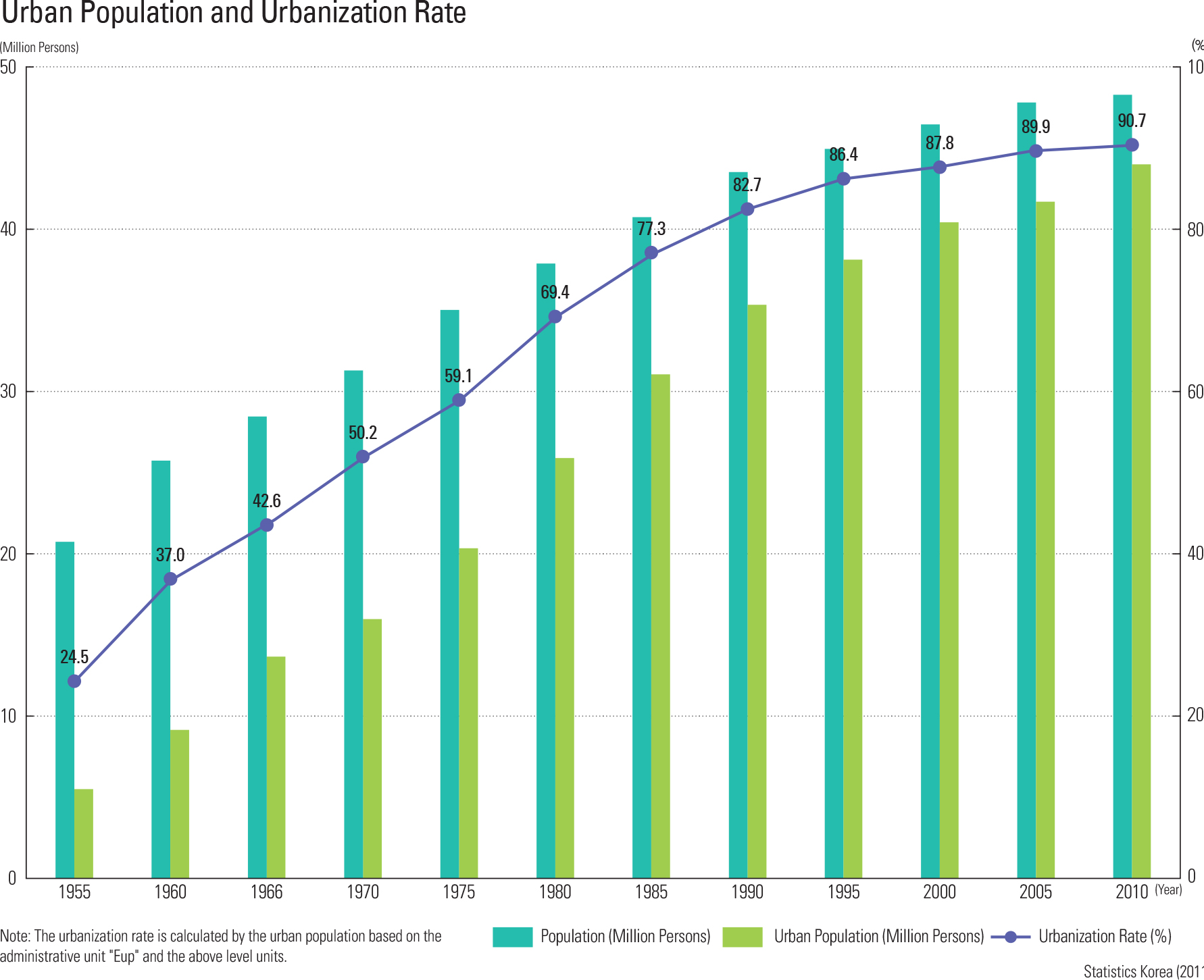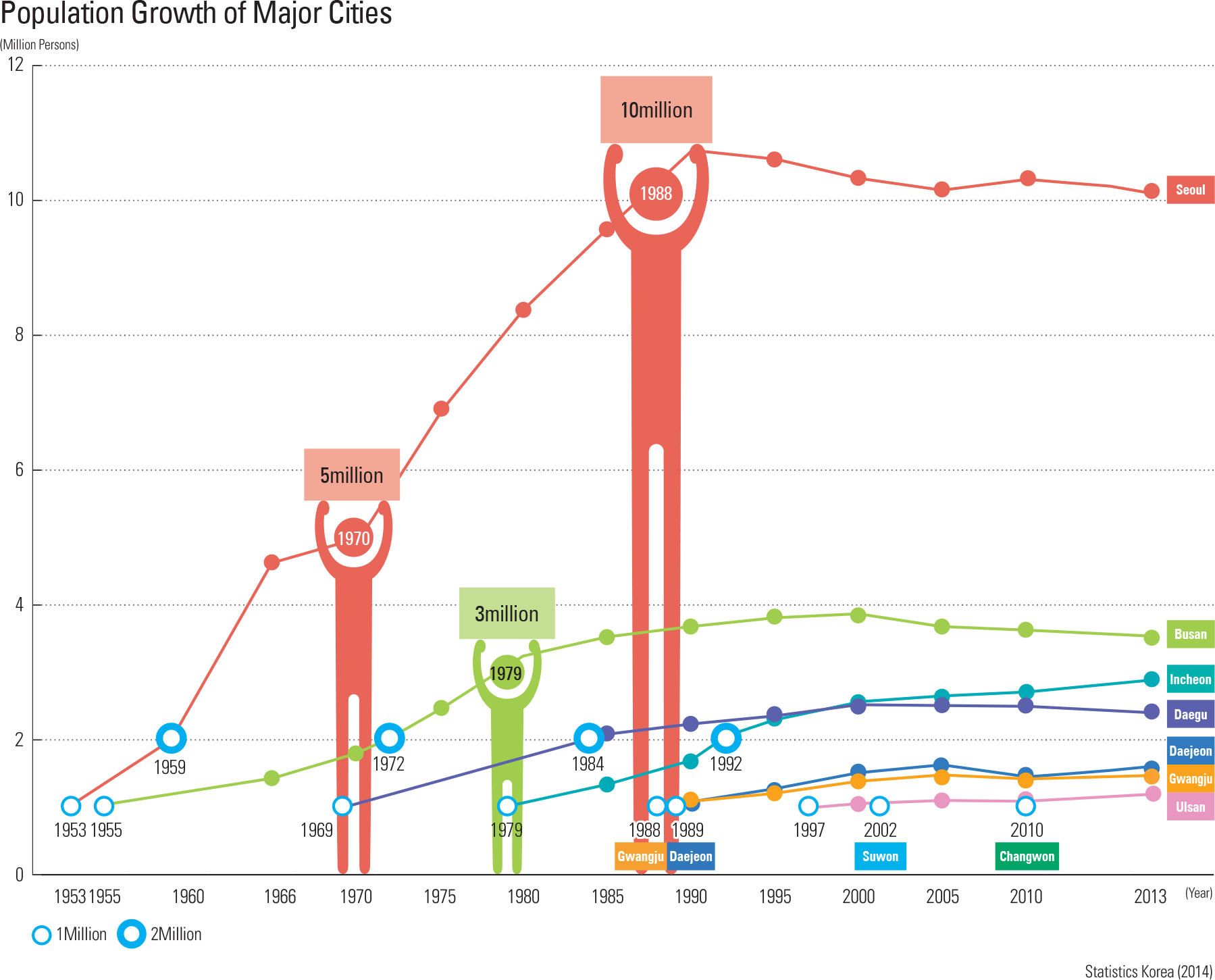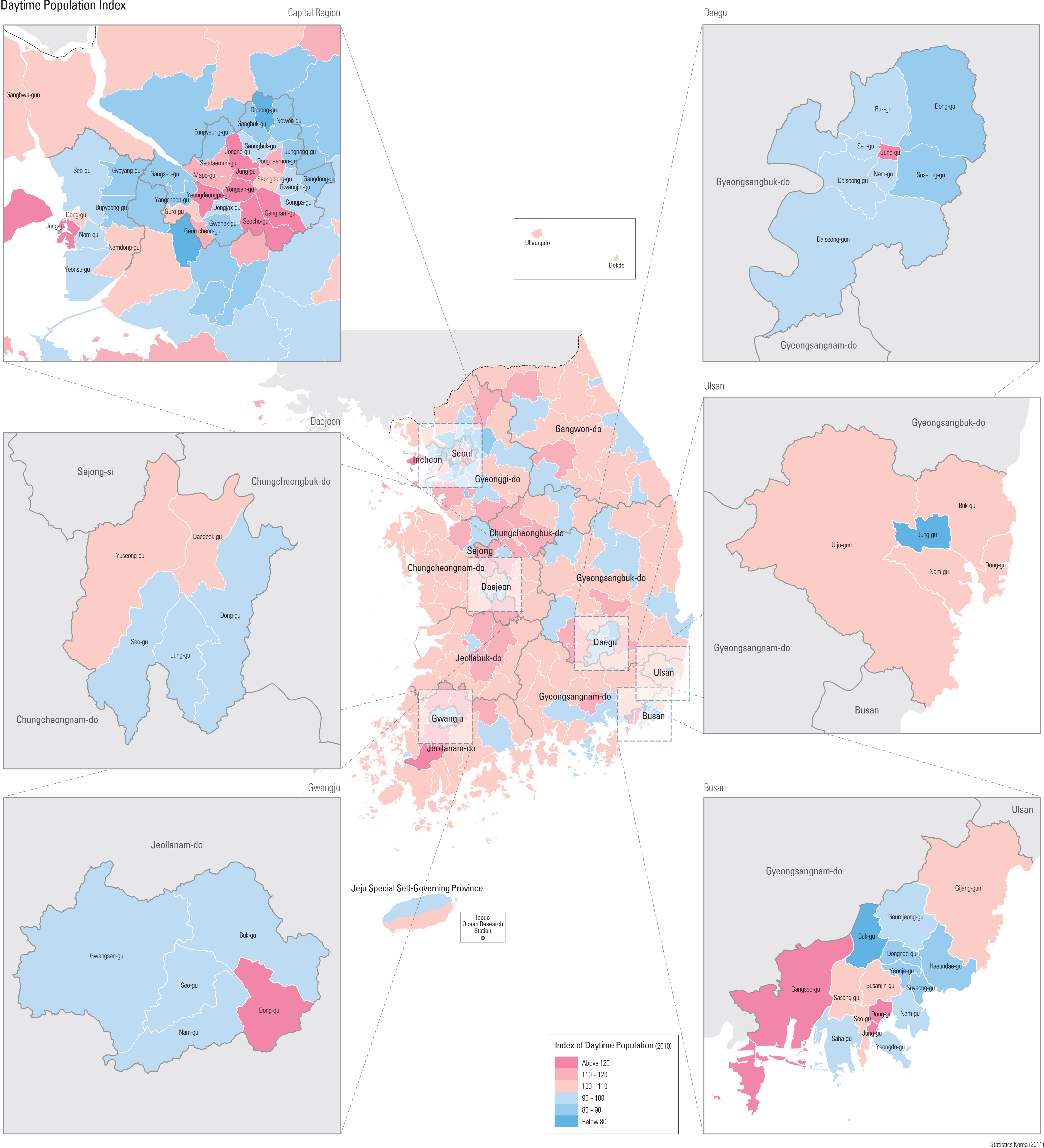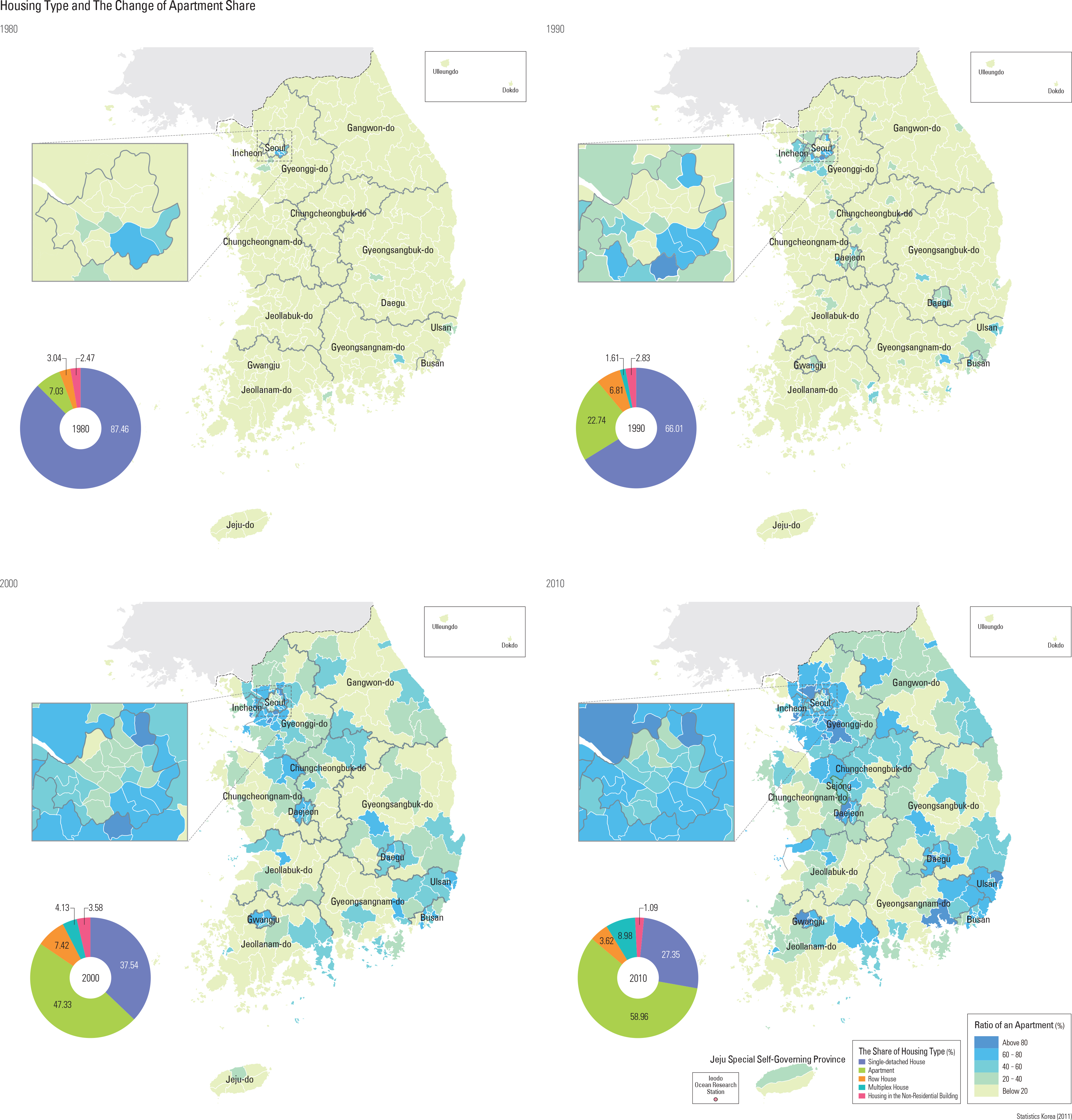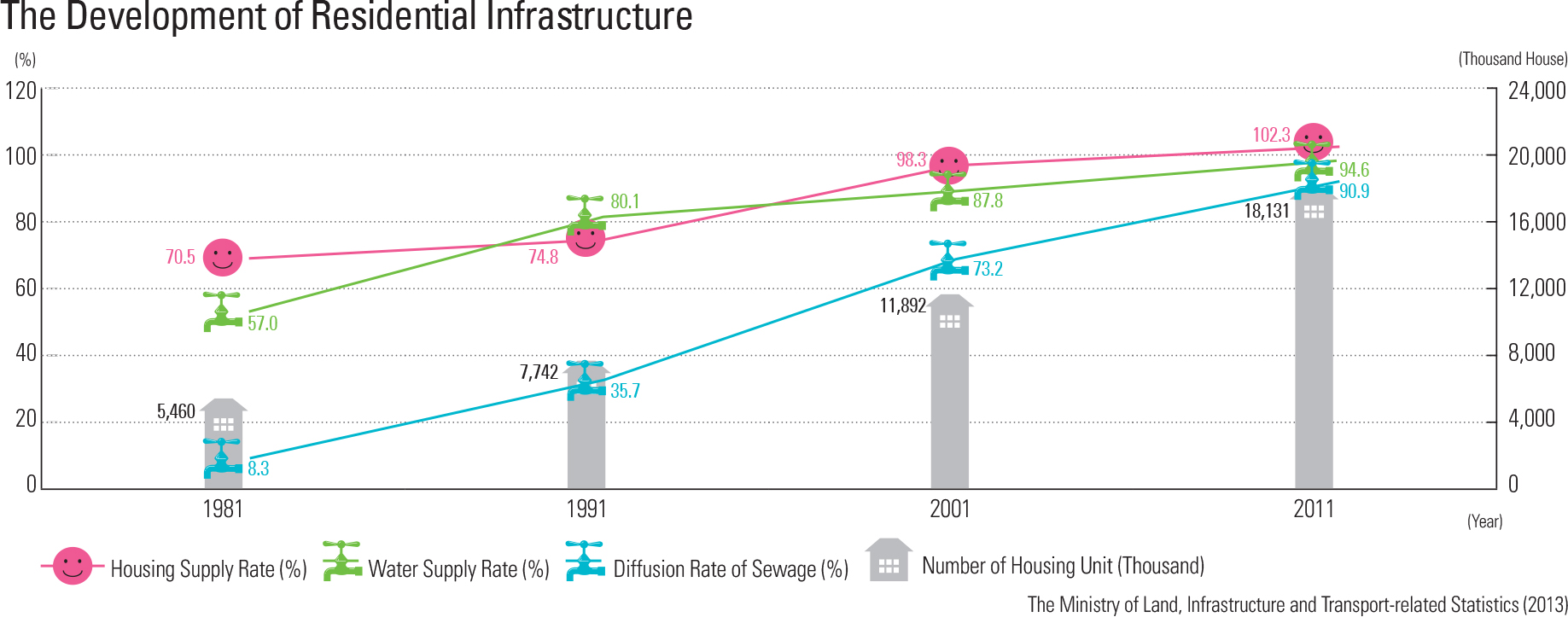The most notable change in Korea's landscape over the past 60 years is increasing urbanization. The representative indicator of this process is the urbanization rate that shows the share of people living in urban areas out of the total national population. This statistical number can differ depending on which administrative level unit, the Dong level or the Eup level, is used to designate an area as urban or rural. According to the Eup level, Korea’s urbanization rate has exceeded 90%. The rate of increase was rapid until the 1980s, but it has since slowed down. This slowing trend indicates that Korea’s urbanization has entered its final phase from the earlier acceleration phase. The capital area surrounding Seoul, Busan and its surrounding area, and other metropolitan cities all show high urbanization rates.
The list indicating urban growth in Korea when each city reached 1 million residents is shown here in chronological order: Seoul (1953), Busan (1955), Daegu (1969), Incheon (1979), Gwangju (1988), Daejeon (1989), and Ulsan (1997). As for cites that did not meet the metropolitan definition, Suwonsi exceeded 1 million in 2002 and Changwon-si in 2010; Goyang-si and Seongnam-si are likely to follow. Seoul exceeded 10 million in 1988 and became a megacity even by international standards. Busan, the second largest city, exceeded 3 million in 1979; however, its population stagnated and has decreased recently. The distribution of cities by population size shows a clear trend of port city development along the southeastern coastal industrial zone as well as the expansion of the greater capital area. These two urban centers in particular gave rise to the Gyeongbu Axis.


